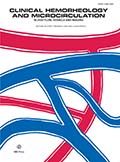Authors: Bagherzadeh-Rahmani, Behnam | Marzetti, Emanuele | Karami, Esmail | Campbell, Bill I. | Fakourian, Ali | Haghighi, Amir Hossein | Mousavi, Seyyed Hossein | Heinrich, Katie M. | Brazzi, Luca | Jung, Friedrich | Baker, Julien S. | Patel, Darpan I.
Article Type:
Research Article
Abstract:
OBJECTIVES: The purpose of this study was to investigate the effects of 6 weeks of resistance training (RT) combined with aerobic training (AT) and Tirzepatide supplementation on lipid profiles, insulin resistance, anthropometric characteristics and physical fitness in prediabetic obese soldiers. METHODS: 61 obese men were randomly divided into six groups: Placebo; Tirzepatide 5 mg (T5); Tirzepatide 2.5 mg (T2.5); Hypertrophy, Strength, Power-Circuit Training+Placebo (Ex+P); Hypertrophy, Strength, Power-Circuit Training+Tirzepatide 5 mg (Ex+T5); Hypertrophy, Strength, Power-Circuit Training+Tirzepatide 2.5 mg (Ex+T2.5). All training groups performed aerobic training (AT) after resistance training. Subjects trained for six weeks, three sessions per week. Before and after
…the intervention period, the participants were evaluated for anthropometric measures, body composition [body weight, body mass index (BMI), waist circumference (WC), waist to hip ratio (WHR) and fat mass (FM)], cardiorespiratory fitness (VO2 max), and muscle strength (chest press 1RM and leg press 1RM). Blood biochemistry evaluations included triglyceride (TG), total cholesterol (TC), low density lipoprotein cholesterol (LDL-C), high-density lipoprotein cholesterol (HDL-C), fasting blood glucose (FBG), insulin level and insulin resistance (HOMA-IR). To evaluate the differences between the groups, ANCOVA statistical method was used along with Bonferroni’s post hoc test, and the significance level was P < 0.05. RESULTS: Body weight, BMI, WC, FM, FBG, LDL-C, TC, TG and HOMA-IR were significantly decreased in Ex+P, Ex+T5 and Ex+T2.5 groups compared to Placebo, T5 and T2.5 groups. WHR significantly decreased in Ex+P, Ex+T5 and Ex+T2.5 groups compared to Placebo group. HDL-C, chest press and leg press significantly increased in Ex+P, Ex+T5 and Ex+T2.5 groups compared to Placebo, T5 and T2.5 groups. VO2 max significantly increased and insulin significantly decreased in Ex+P group compared to Placebo, T5 and T2.5 groups. FM, FBG and TG were significantly decreased in both the T2.5 and T5 groups compared to Placebo group. HOMA-IR, LDL-C and TC significantly decreased in the T5 group compared to Placebo group. Also, leg press significantly increased in Ex+P group compared to all other groups. CONCLUSIONS: Performing six weeks of combined resistance and aerobic training in the form of RT+AT alone is more effective than the simultaneous use of Tirzepatide on cardiorespiratory fitness, strength, and modulating insulin levels. Taking Tirzepatide in doses of 5 mg and 2.5 mg in combination with exercise training did not have a significant advantage over exercise training alone. Finally, taking Tirzepatide in doses of 5 mg or 2.5 mg in combination with exercise training is not significantly superior to each other.
Show more
Keywords: Obesity, combined training, GIP, GLP-1, Tirzepatide
DOI: 10.3233/CH-242134
Citation: Clinical Hemorheology and Microcirculation,
vol. Pre-press, no. Pre-press, pp. 1-16, 2024
Price: EUR 27.50




